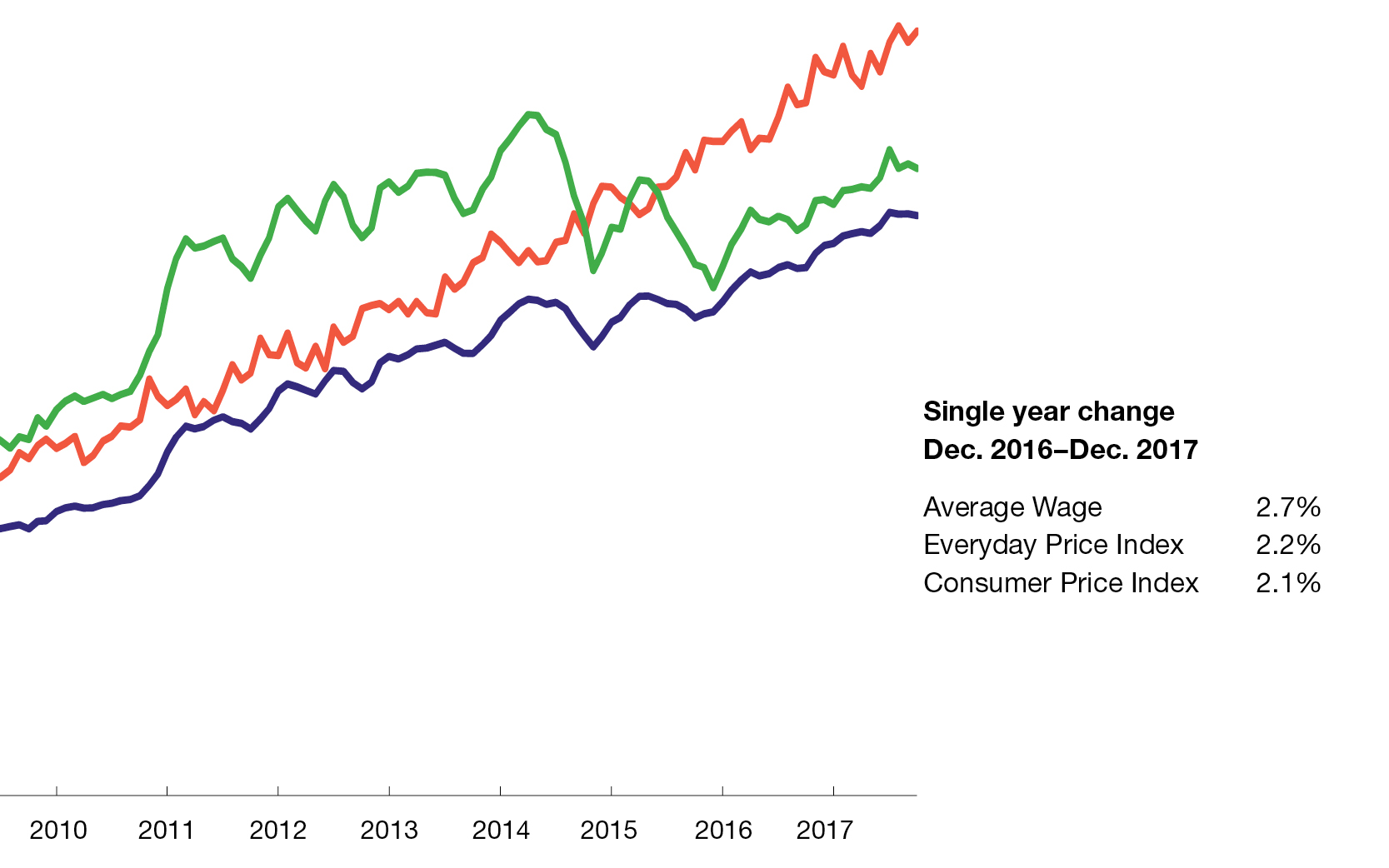The Excelsior Scholarship: Who Gets a Free Ride?
In an earlier piece about student aid and student debt, I cited many studies that found increasing government-loan availability was the biggest contributor to the rising cost of college in recent years. Many students benefit from subsidized loans, but others are saddled with debt. In the meantime, colleges make out very well. By making four-year public college free to middle-class families (New York’s program would apply to any family with an income below $100,000), the government would be expanding grant programs drastically. Almost certainly this would raise the price of college for people ineligible for the credit — and if not, taxpayers at large would bear the cost.
This ineligible group includes not only wealthier families but part-time students. Further, the proposed program would not reduce non-tuition expenses for any students. And existing government grant programs for low-income students would become more expensive if they had to reimburse colleges for higher sticker prices of tuition, so this too would increase the burden on all New York taxpayers.
Thus the subsidies would increase public expenditure directly through new grants and indirectly through increased prices of existing ones, and it would make college more expensive for many nontraditional students. But it is worth engaging with the proposal on its own terms. What is the program intended to do, and what are the probable outcomes for students?
Higher Education and Government Programs
A college education is an important investment for many Americans, but any policy to subsidize higher education has to be grounded in a desire to produce a social benefit, however proponents of the program want to measure it. Many researchers have argued a better-educated population may have spillover effects — increasing productivity and economic growth — and may have more healthful behaviors. These arguments hinge on the idea that the social rate of return to education exceeds the private rate of return, and that incentives can enable society to capture the positive externalities from education. Further, researchers argue, a targeted aid program may help low-income young people and reduce income inequality. Reasonable people may differ on whether the externalities are large and whether these are goals best pursued by government, but at minimum a successful program should do what it sets out to do. So does this program further college attainment?
One common case for federal grant programs is that they provide college access to low-income students that are credit-constrained and may have difficulty getting private lending. The academic literature does find that credit constraints affect college decisions in certain cases. A ubiquitously cited 2002 study by Carneiro and Heckman found “some evidence that up to 8% of the total US population is credit constrained in a short run sense.” Using more recent data, a 2017 paper by Heckman and Rong Hai finds “substantial life cycle credit constraints.” It also finds in counterfactual experiments that high tuition costs weakly increase inequality. Other recent work supports this finding. A 2014 study by Hanushek, Leung, and Yilmaz finds “income-contingent loans and need-based policies are most effective in promoting aggregate efficiency and income inequality,” while a 2016 paper by Benjamin Cowan gives evidence that credit constraints contribute to differences in educational attainment between low-income and high-income students. This evidence suggests that credit constraints are not a significant problem for most middle-class families.
Which Students Will the Excelsior Scholarship Affect?
The Excelsior Scholarship is definitely not targeted at the lowest-income students. While all students whose family income is below $100,000 are eligible, many existing programs support low-income families. To get a sense of current costs, look at one of the largest State University of New York campuses by undergraduate enrollment, SUNY–Binghamton. According to the College Scorecard, average cost of attendance is $10,585 for a student with family income of $0–$30,000, $18,424 for a student with family income of $48,001–$75,000, and $21,249 for a student with family income of $75,001–$110,000.
Consider two points about SUNY’s tuition figures. First, existing programs already make the cost of attendance progressive by income. Second, annual in-state tuition at SUNY universities is $6,470, fees are $2,940, and room and board for 2017–18 is estimated to be $14,577, the latter figure making up roughly 60 percent of the listed cost of attendance. There is a huge difference between “free tuition” and “free college,” and the Excelsior Scholarship does not do anything to reduce the burden of fees or room and board.
The student helped the most by the Excelsior Scholarship then is not the poor student who may face credit constraints, but one in the upper-middle-class range who is paying close to the full sticker price presently. The wealthiest students are ineligible for the program, and the poorest students are already receiving significant aid to defray tuition and other college costs. Perhaps focusing on middle-class students makes sense if the program can and should help a lot of them and if low-income students already receive sufficient support. Some evidence suggests college enrollment rates for low-income teens are catching up to those of middle-class teens, as shown in figure 3 of this Department of Education report. The evidence comes with two major caveats, however: it looks only at high school completers, masking differences between income groups in dropout rates, and it combines two- and four-year enrollments. Given those caveats, it is not clear that low-income teens’ opportunities have caught up to their wealthier peers. Meanwhile, college attendance rates among middle-income youth are steady. How will the new program change these rates?
The behavior of two types of middle-class students may be affected by the Excelsior Scholarship. One is students who otherwise would have gone to a private or out-of-state school but now will stay in the SUNY system instead. The other is students who would have decided not to attend a four-year college at all without the scholarship.
It is not clear why either group should get special treatment from the state government. Students who would have attended a non-SUNY school without the scholarship are doing fine without help, and the program’s requirement to stay in New York State for four years after graduation or repay the credit is a harsher constraint on those who already considered leaving the state for school than on those who planned to stay home. With imperfect information, these students may even become worse off under the program. Research on the smaller-scale but similar Adams Scholarship in Massachusetts found that students who accepted tuition waivers to attend state schools had lower graduation rates. If “college quality has a substantial impact on college completion rates and. . . students likely do not understand this fact well,” as the authors’ results suggest, then the program may harm students who attend a cheaper but less selective school because of the scholarship.
Meanwhile, students who would have chosen not to attend college in the current regime will have higher risk of not graduating or of earning small labor-market returns from attendance. If SUNY colleges are operating near capacity, bringing these types of students back may also crowd out current attendees who have decided independently that SUNY schools are their best fit. An essay in Inside Higher Education makes exactly this point: increased admissions will push some low-income or first-generation college students out of the SUNY system.
Eligibility and Limitations
If these unintended consequences do not materialize, it may be only because the program is smaller than it at first appears. Governor Cuomo stated that 80 percent of New York families with college-age children would be eligible for the grant, but in practice the number is much smaller. Only 5 percent of current New York public-college enrollees would be eligible for the grant under current conditions, for a variety of reasons, the biggest of which is that most students do not currently take a full-time load of classes and so are not on pace for four-year graduation. The College Scorecard linked above shows that SUNY–Binghamton has an 81 percent graduation rate — but it measures six-year graduation rates and excludes part-time students and those who had previously enrolled in college.
Of course, one reason for the program’s rules is to enhance incentives for on-time graduation, but I am skeptical it will change much. The current opportunity cost of an extra year of college is $10,000-$20,000 for SUNY students plus the forgone income they could have earned in the labor market as a degree holder instead of a student. It is more likely that the scholarship program will act as a transfer to well-prepared middle-class students who had a good chance of graduating in four years anyway than as a nudge to nontraditional students to complete their studies faster.
Overall, the case for the Excelsior Scholarship is not strong. It is healthy to be skeptical of any government program, but in particular it is important that any program has clear goals and a clear story explaining how that goal will be achieved by the program. The New York State website claims that “today, college is what high school was – it should always be an option even if you can’t afford it.… [I]n New York State, every child will have the opportunity that education provides.” However, as instituted, the program cannot make college affordable for very low-income families, and in practice it will mostly serve as a tuition waiver for middle-class students for whom college is already an opportunity within reach, at the expense of both their poorer and wealthier classmates.





